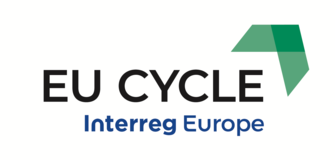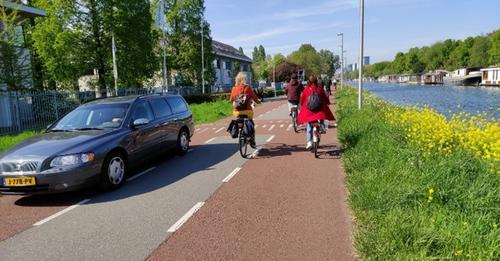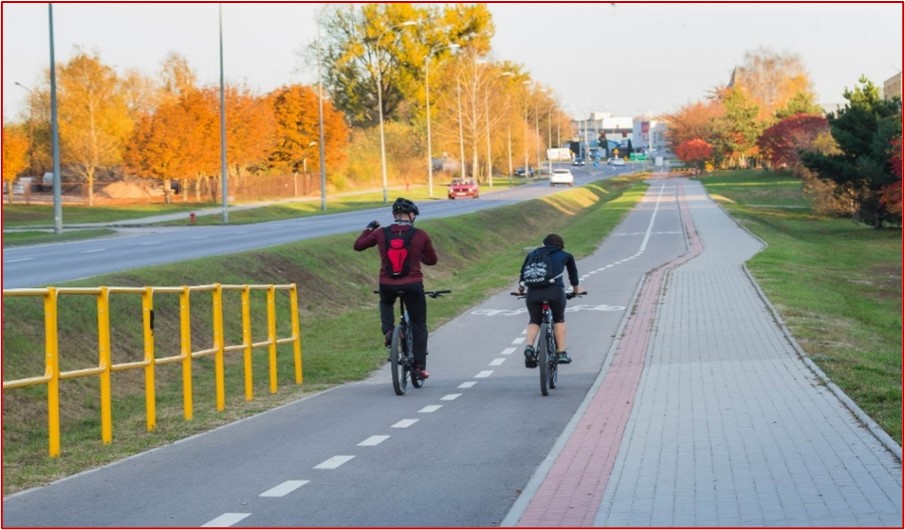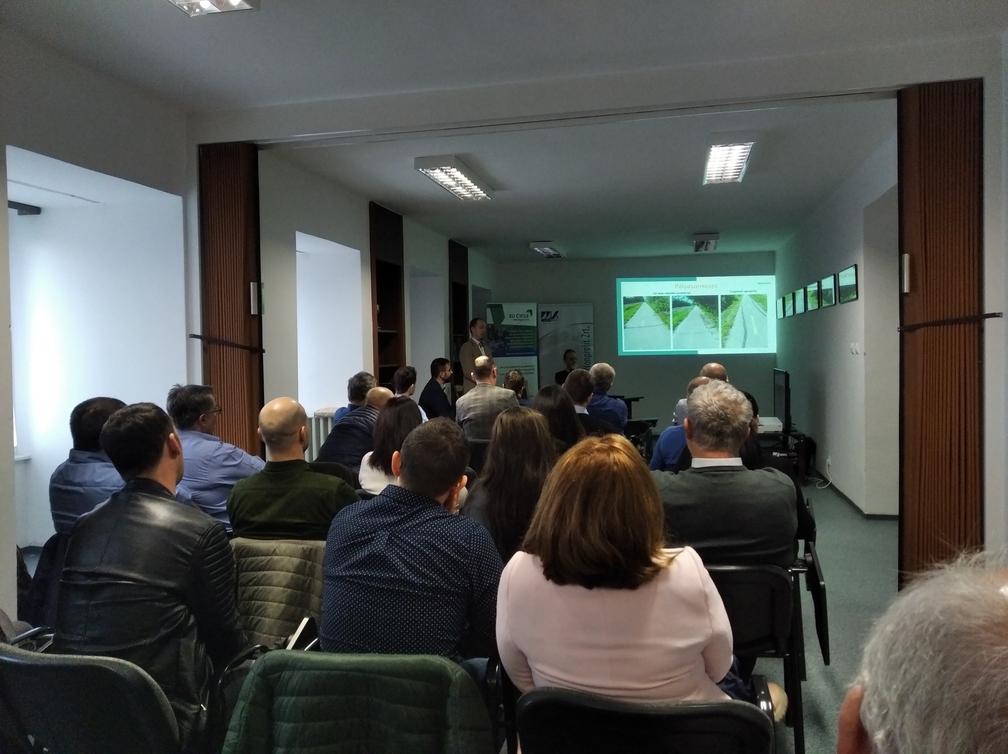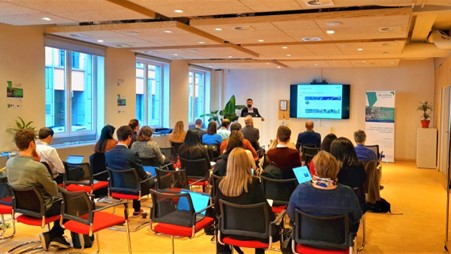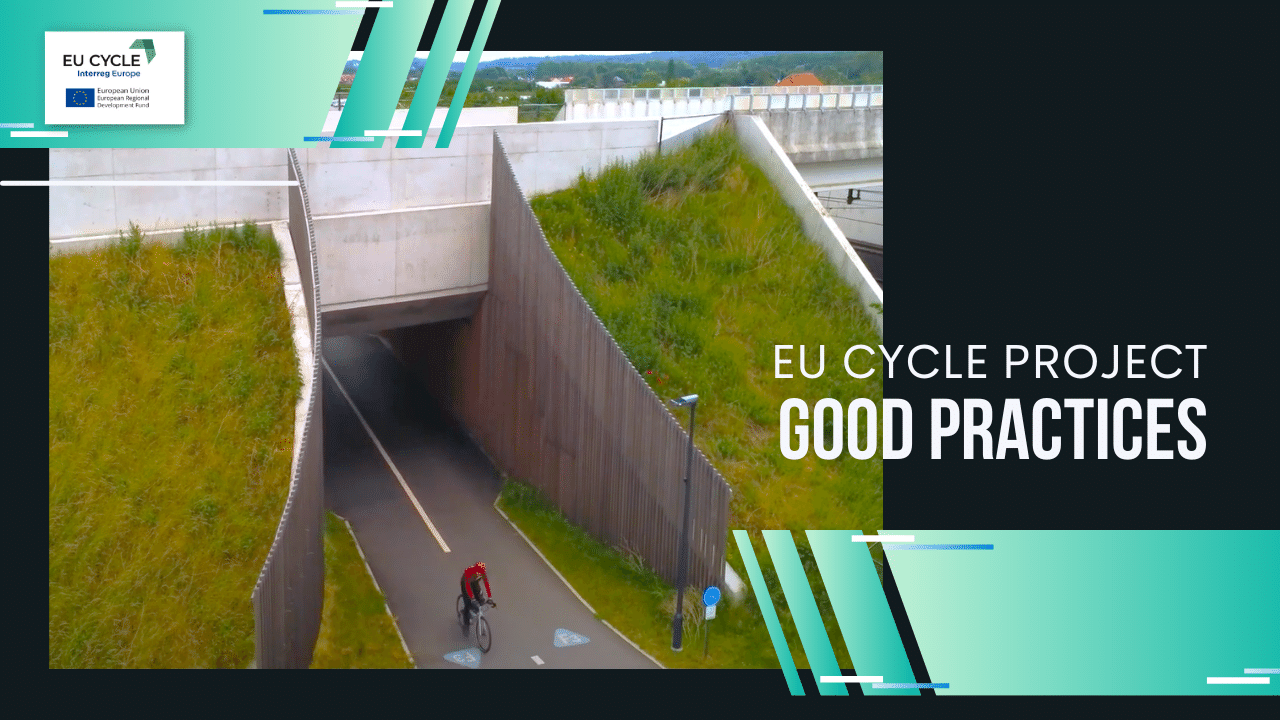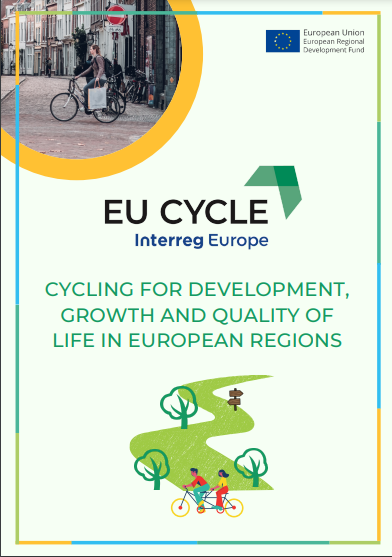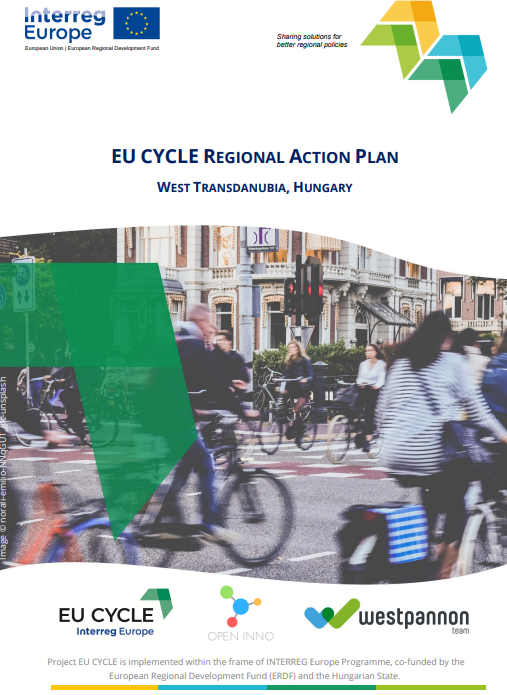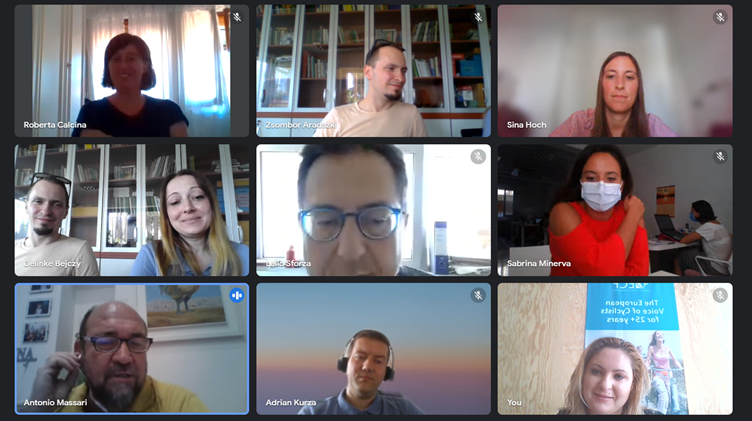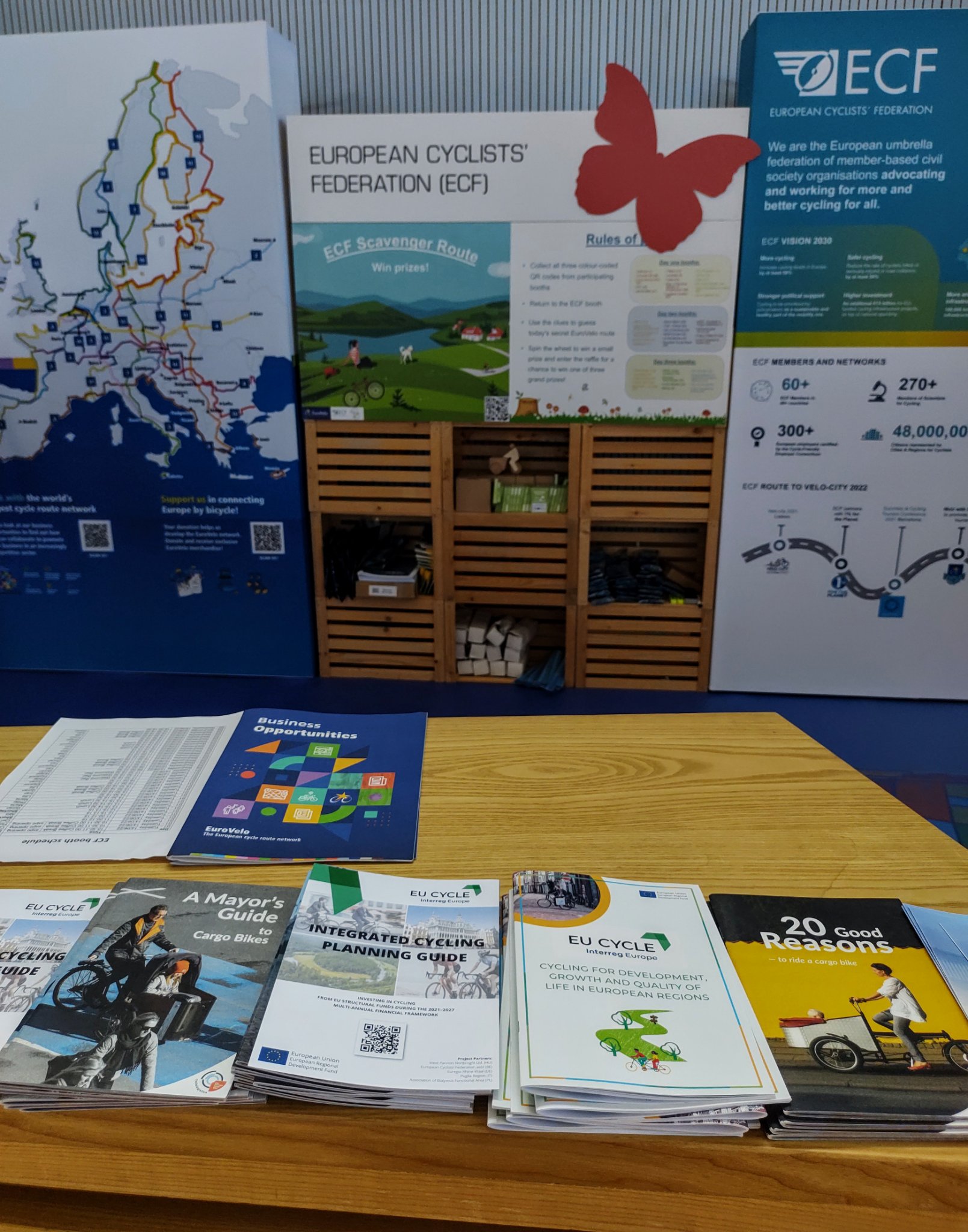
EU CYCLE partners organized on 26.02.2021 a virtual study visit in order to discuss the topic of regional cycling and the lessons learned from existing projects.
The event kicked off with the discussion around the East bicycle trail – Green Velo and the system of recommendations for Cycle Friendly Places (PL).
Adrian Kurza, project manager at Association of Bialystok Functional Area, mentioned that the Green Velo Eastern Bicycle Route, almost 2000 km long, is the longest bicycle route in Poland. About 300 km of the route consists of new and reconstructed bicycle tracks and pedestrian-cycling paths, and almost 150 km of renovated dirt roads. 228 Bicycle Service Points, equipped with stands, shelters, benches, waste baskets and information boards have been built along the route as well.

The project also included the creation of a system of Bicycle Friendly Places, that had as objective to recommend, develop and promote a system for serving bicycle tourists along the Eastern Bicycle Route Green Velo.
The greatest difficulty to overcome during the project implementation was the lack of a system of cycle routes and the undefined methodology of marking cycle routes in the legislation. The EU co-funding of the project was used as a leverage to update the outdated national regulations for signs and signals on public roads to include a modern system of signing long-distance cycle routes. The necessary signs and rules of locating them on public roads were finally introduced by a ministerial ordinance in 2013.
The meeting continued with the presentation of a good practice from the West Pomerania Region (PL). The building of the network of long-distance cycle routes started with the planning phase in 2015, having as an output a Report that contains the analysis of various aspects important for cycle tourism in the region (protected areas, important cycle traffic generators etc..) and serves as a base for the implementation phase of the project.
After the identification of 12 possible corridors, 4 priority routes were selected for the first stage of the implementation, in order to adapt to the available investment capacity. The choice was based on the touristic attractiveness, linking biggest traffic generators, connection to railway network and the high use of the existing bicycle infrastructure.

The investments were implemented by the regional road authority and an agreement was signed with every municipality that was on the way of the 4 routes. The routes will consist of different sections and after completing the project, around 60% length of the network will be car-free.

‘’We have installed cycle traffic counters, and the data clearly shows that cycling is extremely popular. Before installing the counters, nobody would believe that more than 7,000 cyclists daily could pass the Polish – German border near small town of Świnoujście. Bicycle counters data showed as well how in 2020 cycling boomed due to Covid ”, mentioned Wojciech Grela from the Marshal’s office of the West Pomeranian Region.

The study visit ended with a general presentation on regional cycle network planning.
‘’There is a gold standard when it comes to the design criteria, and it includes five principles: coherence, directness, safety, attractiveness and comfort. There are minor variations depending on the region and type of network, however all of them have to be met. It is very tempting to say ‘’safety first’’, however if you build a perfectly safe route that is not coherent or comfortable to use it will be a waste of resources’, underlined Aleksander Buczyński, Policy Officer at ECF.

Concerning the types of regional networks, three main types were presented during the meeting: functional (commuting), touristic and recreational, together with examples of good practices for each type. Specific routes can sometimes combine multiple functions, and in case of the beginning regions, it is best to start with routes that can serve all groups of users to make best use of limited resources.
Another important factor to keep in mind is the governance, as there can be many challenges related to a big variety of stakeholders, regional road administration not having competence outside the regional road network or the lack of tools to acquire land for cycle track construction.
Practical tips were given from the existing regional networks, e.g. a system with clear backbone and side routes, unbundling cycling and road network, making use of filtered permeability & low-hanging fruits, as well as the integration of elements of cycling infrastructure in other investments.
One of the successful prioritization strategies is to start with sections that currently provide the worst conditions for cycling. This way a part of the target users can already start using the route after the first investments and create a momentum for further upgrading the route.
Watch the full video of the workshop here.
